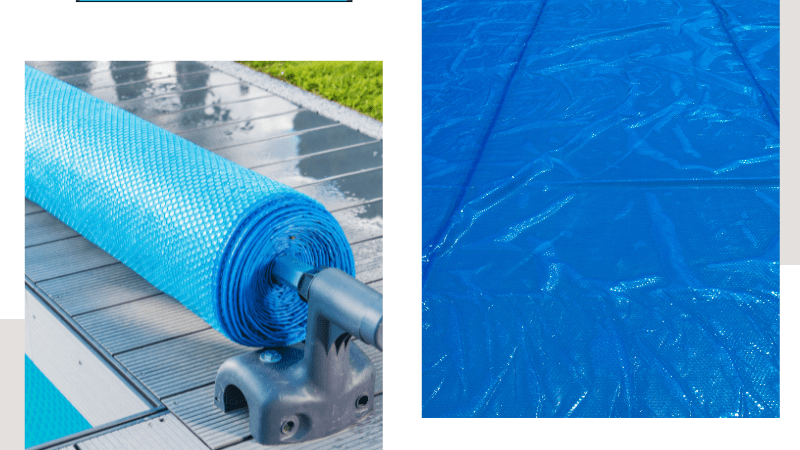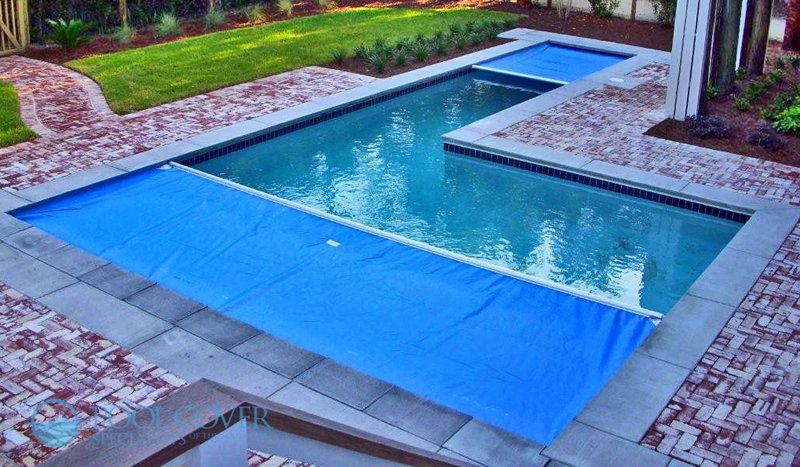
If you love swimming in comfortably warm water but are concerned about your energy bills, solar pool covers in San Mateo are an excellent option to keep your pool nice and warm without spending a grand on heating. It’s one great way to extend your swimming season!
Understanding the types of solar pool covers available will help you decide which is best for your needs and preferences.
What is a solar pool cover?
A solar pool cover is a pool cover usually made from light, transparent plastic. It has thermal bubbles that help capture the sun’s heat and transfer the heat to the pool water, warming it up. It resembles the common bubble wrap, only much larger.
Solar pool covers function like a thermal blanket. While trapping the sun’s heat and transferring it to warm the pool water, the special plastic material is resistant to ultraviolet (UV) rays.
Available in various thicknesses, a solar pool cover can increase the pool water temperature by 5 to 15 degrees Fahrenheit.
The energy loss from your swimming pool can be significantly decreased with the addition of a solar pool cover. Evaporation is the chief cause of pool energy loss (as well as pool water loss). Moreover, pool covers help to minimize the evaporation rate.
Solar pool covers typically float on the top of the pool. Although they may be good for the water, solar pool covers are not safety devices. So, they’re not recommended if you have small children or pets.
Solar pool covers are available in many shapes and sizes that fit above-ground and inground swimming pools.
Outdoor pools
Outdoor swimming pools lose energy in many ways, but most commonly through evaporation. The rate of evaporation depends on air temperature, humidity, pool temperature, and wind speed near the pool’s surface.
Solar pool covers gain heat from the sun and is an effective means of cutting costs on an outdoor pool. The covers absorb approximately 70% to 80% of the solar energy directed on the pool surface, maintaining the pool water’s temperature.
Using a solar pool cover for your outdoor swimming pool is a cost-effective and eco-friendly solution to heat your pool.
Indoor pools
Evaporation occurs in outdoor and indoor swimming pools, although the evaporation rate in indoor pools is not as drastic as in outdoor pools. And unlike outdoor pools, indoor pools are not subject to weather and temperature fluctuations.
Indoor pools require proper room ventilation to control the indoor humidity levels caused by evaporation. The ventilated air needs to be conditioned, which requires significant energy. Solar pool covers help eliminate evaporation and help control the environment within the room.
Alternatives to solar pool covers
- Solar pool rings – Solar pool rings are like floating discs with a solar bubble lining. They are less bulky and less expensive than a full solar cover. However, solar pool rings may expose some water spaces, making them less effective in minimizing evaporation. Also, dirt and debris can get into the exposed areas of the pool.
- Liquid solar pool cover – Yes, there is such a thing! It is more of an invisible shield compared to a traditional pool cover. Liquid solar pool covers can help increase the pool water’s temperature by up to 6 degrees Fahrenheit. They are also incredibly easy to use as long as you follow the manufacturer’s recommendations. But if you’re looking for protection against dirt and debris, liquid solar pool covers are not the option for you.
- Custom solar pool cover – Custom solar pool covers are designed to fit the shape of your pool. This is a premium option for households with unique pool designs. Possible upgrades include a reel that will make retracting the cover easier or a system that allows the cover to double as a safety pool cover.
Getting the right fit
It’s better to purchase a solar pool cover that’s a bit larger than your swimming pool’s surface area. Unfold and place the cover over the water. Then, trim the edges to conform the solar cover to the shape of your pool.
How much does a solar pool cover cost?
There is a range of costs for solar pool covers. Prices vary from $75 to $225. But depending on the quality of the pool cover and the size of your swimming pool, the costs may go higher. If you choose an option with a reel, it will be in the $200 to $500 range in most cases.
However, solar pool covers are significantly cheaper than a pool heater. Installing a pool heater costs an average of $4,500. A solar pool cover will not offer as much control over the temperature of your pool water. But if you’re looking to extend your swim season on a budget, a solar pool cover may be the best choice.
Here are some of the benefits of solar pool covers:
- They heat up your pool water.
- They keep dirt and debris out of the water.
- They help reduce water and evaporation rates by up to 95%.
- They are more affordable than the other pool cover types.
- Easy to set up, remove, and store compared to the other pool cover types.
Other types of covers to warm your pool
The extent of solar gain contribution varies, depending on the type of cover used. Safety vinyl pool covers can also help increase your pool water’s temperature. Because a safety vinyl pool cover eliminates evaporation in a 24-hour time frame, it has done a better job of heating the pool than some solar blankets.
There’s an additional benefit of using safety pool covers that solar pool covers don’t have – it is a safety device that will keep children and animals from entering the pool, thus minimizing accidents.
Checking your pool’s chlorine levels every four weeks is required as high chlorine content can damage the cover. Start checking your pool’s chlorine level from the first week to maintain the recommended level.
Solar pool covers should be folded and stored in a canvas bag when not in use. Your solar pool covers in San Mateo will last longer with proper care and maintenance.











